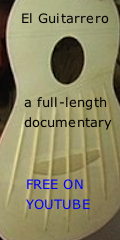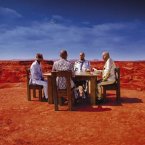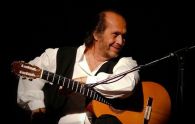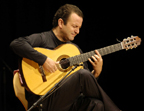Welcome to one of the most active flamenco sites on the Internet. Guests can read most posts but if you want to participate click here to register.
This site is dedicated to the memory of Paco de Lucía, Ron Mitchell, Guy Williams, Linda Elvira, Philip John Lee, Craig Eros, Ben Woods, David Serva and Tom Blackshear who went ahead of us.
We receive 12,200 visitors a month from 200 countries and 1.7 million page impressions a year. To advertise on this site please contact us.
|

|
|
Alzapua question...
|
You are logged in as Guest
|
|
Users viewing this topic: none
|
|
Login  | |
|
Guest

|
 Alzapua question... Alzapua question...
|
|
|
|
I am just starting to learn flamenco guitar. Do most people anchor their right hand to a string or the guitar when playing alzapua? Or just play freehand?
|
|
|
|
REPORT THIS POST AS INAPPROPRIATE |
Date Nov. 21 2005 20:26:22
 |
|
Guest

|
 RE: Alzapua question... (in reply to luke.park) RE: Alzapua question... (in reply to luke.park)
|
|
|
As everyone will say, there are all different ways of doing it.
I used to anchor for years, but stopped and saw immediate improvement. Not only is it faster and looser without, but with an anchor you can also hear finger and nail rubbing against the guitar board if you use a mic. I do use the golpe as a quick anchor to position my hand for the attack and as a leverage to get my thumb going.
http://www.flamenco-guitar-mainz.de/alzapuagrund2.htm
Here I ATTEMPT to teach my way of alzapua with text and videos, but it is one of many possibilities for many different hands....
|
|
|
|
REPORT THIS POST AS INAPPROPRIATE |
Date Dec. 31 2005 10:47:11
 |
|
Guest

|
 RE: Alzapua question... (in reply to XXX) RE: Alzapua question... (in reply to XXX)
|
|
|
quote:
Im soo slow when doing it with resting
Hi Deniz,
I think you mean the very first stroke that you make going into an alzapua? There I'll put my index against the first string to get my thumb going, or if I'm starting on a golpe I'll use that for leverage. After that my hand and thumb get momentum and I'm playing free. I think that's how most guitarists would do it.
Johnny
www.flamenco-guitar-mainz.de
|
|
|
|
REPORT THIS POST AS INAPPROPRIATE |
Date Jan. 2 2006 20:17:42
 |
|
Guest

|
 RE: Alzapua question... (in reply to XXX) RE: Alzapua question... (in reply to XXX)
|
|
|
quote:
But I also mean the next thumb strokes
There I just let the thumb cut in there without resting, meaning if I play the 6th string I play apoyando onto the 5th string below and let the thumb hit the 6th on the way in.
I think Miguel means the 1st E and not the sixth. I do always have my index finger just above the 1st and might even press against it lightly while playing alzapua for leverage or angle.
Johnny
|
|
|
|
REPORT THIS POST AS INAPPROPRIATE |
Date Jan. 2 2006 22:42:47
 |
|
Guest

|
 RE: Alzapua question... (in reply to Guest) RE: Alzapua question... (in reply to Guest)
|
|
|
quote:
I think Miguel means the 1st E and not the sixth
Silly me, you must know that - sorry. Actually, if you wanna play the 1st at a certain point in a technique it'd probably be good to rest the index on it for when you want to play it.
|
|
|
|
REPORT THIS POST AS INAPPROPRIATE |
Date Jan. 2 2006 22:45:56
 |
|
 New Messages New Messages |
 No New Messages No New Messages |
 Hot Topic w/ New Messages Hot Topic w/ New Messages |
 Hot Topic w/o New Messages Hot Topic w/o New Messages |
 Locked w/ New Messages Locked w/ New Messages |
 Locked w/o New Messages Locked w/o New Messages |
|
 Post New Thread
Post New Thread
 Reply to Message
Reply to Message
 Post New Poll
Post New Poll
 Submit Vote
Submit Vote
 Delete My Own Post
Delete My Own Post
 Delete My Own Thread
Delete My Own Thread
 Rate Posts
Rate Posts
|
|
|
Forum Software powered by ASP Playground Advanced Edition 2.0.5
Copyright © 2000 - 2003 ASPPlayground.NET |
0.09375 secs.
|


 Printable Version
Printable Version
















 New Messages
New Messages No New Messages
No New Messages Hot Topic w/ New Messages
Hot Topic w/ New Messages Hot Topic w/o New Messages
Hot Topic w/o New Messages Locked w/ New Messages
Locked w/ New Messages Locked w/o New Messages
Locked w/o New Messages Post New Thread
Post New Thread